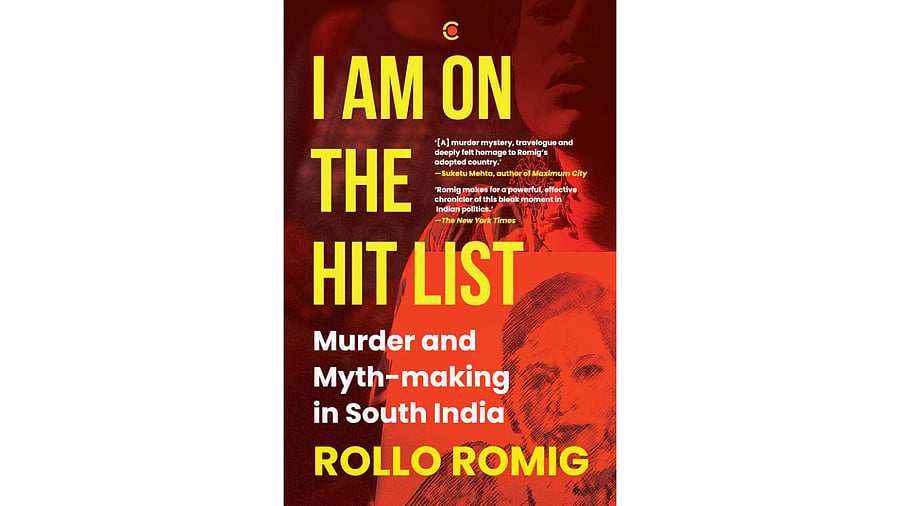
I Am On The Hit List
On September 5, 2017, outspoken journalist Gauri Lankesh was gunned down outside her home in Bengaluru by two motorcycle-borne assailants. The shocking murder evoked an outpouring of grief and nationwide protests that made international headlines. It was baffling how a frail 55-year-old woman editing a struggling Kannada tabloid posed a threat to anyone.
But social media saw countless posts rejoicing over the killing. Initially considered a blind case, it took years for the arrest of suspects who are yet to be brought to book. All have links with the Hindu right wing. I Am On The Hit List is an in-depth investigation into Gauri’s murder and its political context. Rollo Romig, an American journalist reporting on south India for years, follows the trail of Gauri’s life and times as well as the investigation that followed. He sensitively portrays Gauri’s life as an activist-journalist.
Piecing together details gathered from Gauri’s family members, friends, erstwhile colleagues, activists, investigating officers, the underworld and shadowy religious groups, the narrative examines how Indian politics and society have transformed since Narendra Modi became Prime Minister in 2014.
Those who have known Gauri as a conventional journalist in an English daily recall her as a cheerful, friendly, fun-loving person with a streak of defiance and leading a carefree life. Her makeover as an activist came after the end of a troubled marriage and the death of her father, P Lankesh.
Although ill-equipped due to her poor Kannada, she succeeded her father as the editor of Lankesh Patrike. Lankesh, a towering literary figure and mercurial editor, whom Girish Karnad described as an ‘unmatched genius’, had made a profound impact on Kannada journalism.
Gauri revelled in carrying sensational stories with irreverent headlines, caring little about objectivity or fact-checking. The tendency to mock and offend ideological opponents recklessly earned her many enemies. She was unsparing in her attack on Hindutva. She derisively called RSS members ‘chaddis’. She had ignored well-wishers’ advice to tone down. Gauri had to travel across Karnataka to fight dozens of defamation cases. Her speeches were often intemperate. In the face of threats, she rejected police protection as she valued her freedom.
The Special Investigation team (SIT) probing the Gauri case found a striking similarity with earlier killings of Narendra Dabholkar, Govind Pansare and M M Kalburgi, who had incurred the wrath of Hindutva forces. Two men on a motorcycle with a 7.65 mm pistol were the hit men in all cases. SIT suspected the same hands were behind all the murders. But who ordered the hit remains a mystery. After examining different angles, Romig points a finger at the Goa-based shadowy outfit Sanatan Sansta, self-styled guardians of Hindu dharma.
The group allegedly tries to silence anyone blaspheming the Hindu religion. A 2012 speech of Gauri at Mangaluru questioning why Hinduism does not have a founder like other major religions might have been the trigger, he notes. After visits to the Ashram in Goa and interactions with its members, Romig finds the secretive outfit spreading its tentacles far and wide. Its members are professional youth from the Konkan region with violent tendencies. A battery of lawyers is always ready to defend the members. The SIT unearthed two hit lists with 34 names. At the top of one list was Girish Karnad, while the other had S S Bhagwan, the rationalist academic from Mysuru. Gauri used to say she, too, was on the hit list.
Romig has taken up a challenging project that demanded extensive research for years, exposing radical elements determined to define India as a Hindu state. He uses the story of Gauri to track India’s slide from the world’s largest democracy with religious and cultural diversity towards an authoritarian state.
The murder exposes India’s vulnerability to terror and is a grim warning about the nation’s precarious position with eroding public institutions and a rising climate of hatred and violence. The powerful narrative makes compelling reading with its forebodings on how India’s turn to the right is shrinking the space for plurality.